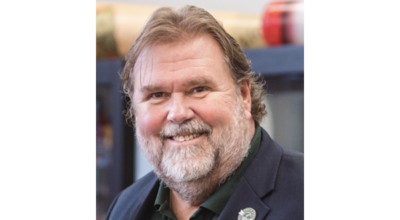Seniors beware of Medicare tactics
Published 9:27 am Thursday, February 26, 2015
When the Clinton Administration began its quest for national health reform back in 1993, I had a front-row seat as Director of Federal Affairs for the Council for Affordable Health Insurance.
When I became Vice President of the National Center for Policy Analysis in 1997, I was given an active role in the planning of the Medicare Modernization Act (MMA), under the direction of Speaker of the House Dennis Hastert.
The most controversial element of the MMA proposal was the introduction of Medicare Part D, a new prescription drug benefit for senior citizens enrolled in the Medicare program.
When Medicare was created in 1965, then-President Lyndon Johnson considered such a plan, but it was believed by most in Congress to be too expensive and wracked with uncertainty.
As a consequence, nothing was done about Medicare coverage of prescription drugs until 2003. At the same time, a new term entered the American lexicon of politics and that term was “MediScare.”
The Democrats in the U.S. Congress, along with several progressive senior citizens’ special interest groups, began telling Medicare recipients that Republicans planned to cut the Medicare budget, “privatize” the program and make it too expensive for most seniors to afford. They called the planned Medicare Part D proposal a disaster for all senior citizens.
I was sent out across the country to fight these false claims by appearing on radio, TV and in speaking forums to try and set the record straight. “MediScare” had taken hold and I was simply appalled at the level of anger and bitterness that the foes of Part D expressed.
These unfounded and quite confusing arguments were firmly embedded in partisan politics with Democrats claiming that the Republicans were out to “privatize” and destroy Medicare and Republicans claiming Democrats opposed Medicare reform simply because they were only concerned about protecting their “turf” and did not want any changes made in the program, regardless of cost to the federal government.
The Medicare Part D premium was enacted in 2003 with strong bipartisan support, despite the controversy, and it now ranks as Medicare’s most popular feature, with an approval rating above 80 percent, according to the Center for Medicare and Medicaid Services (CMS), with 37 million happy seniors participating.
During this run-up to the 2016 presidential elections, the partisan enemies of plans for Medicare reform are beginning their “MediScare” tactics once again using fearsome direct mail solicitations and misinformed rhetoric through social media.
“MediScare” tactics did not work in 2003 under Speaker Dennis Hastert and they won’t work now under Speaker John Boehner.
Speaking from experience, America’s senior citizens benefitted greatly by this Medicare reform and they will again in the future. Savvy senior citizens are saving money on prescription drugs and are now too smart to be taken in by “MediScare” tactics.
Seniors can now speak from experience, too!
A native of Niles, Jack Strayer moved back home in 2009 after living and working in Washington DC since 1976. Strayer has served as a congressional staffer, state legislative press secretary, federal registered lobbyist and Vice President of the National Center for Policy Analysis. He is a nationally recognized expert on federal health policy reform and led the fight for the enactment of Health Savings Accounts.





